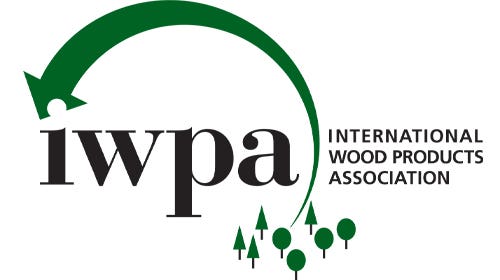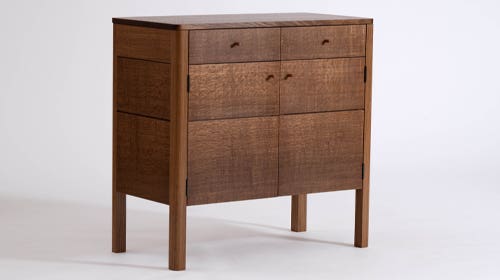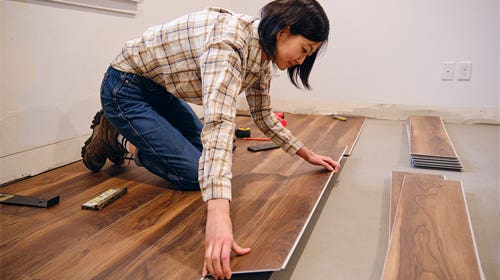Genuine mahogany readily available
After more than five years of turmoil, the U.S. genuine mahogany market has finally stabilized, and the country’s housing crisis can take credit for that. U.S. wholesalers have warehouses filled…
After more than five years of turmoil, the U.S. genuine mahogany market has finally stabilized, and the country’s housing crisis can take credit for that. U.S. wholesalers have warehouses filled with mahogany, but there is one key ingredient missing — buyers.
“There’s nothing going on,” says a dejected William von der Goltz, a wholesale importer with Downes & Reader Hardwood Co., based in Stoughton, Mass. “We’re bringing some in here and there, but I’m talking about bundles of wood, I’m not talking about truckloads. If you are comparing what we are doing now, the activities today, with activities that we had a year ago, it’s just a drop in the ocean.”
Genuine mahogany (Swietenia macrophylla), also known as Honduras mahogany, bigleaf mahogany, and South American mahogany, is exported in the form of logs, sawn wood, veneer sheets and plywood. Mahogany trees reach heights up to 150’ with trunk diameters as large as 7’. Its primary growing region is South America and, to a lesser degree, in Central America and small portions of Mexico. It is the most valuable timber species in its growth area and its uses include fine furniture, architectural millwork, paneling, cabinetry and boatbuilding.
“Nobody is buying it because of the financial crisis,” von der Goltz explains. “It’s the other side of the coin now. We can buy mahogany anywhere and anytime. Its plentiful, prices are stable, but the market in the United States is not buying.”
“We’re still selling to furniture makers; that market is down, but it still is ongoing,” says Lou Irion of Irion Lumber Co. in Wellsboro, Pa., a seller of genuine mahogany for more than 30 years. “We’ve seen the greatest change in the architectural millwork [market]. We brought in quite a bit [of mahogany] just when that market died. But we’re actually glad to have that inventory because the quality of the mahogany that we’re seeing today is [inferior] to what it was.”
In November 2003, the Convention on International Trade in Endangered Species of Wild Fauna and Flora (CITES) imposed stricter regulations on mahogany trade by officially listing it on CITES Appendix II. Shipping of Swietenia macrophylla — in the form of logs, sawn wood, veneer sheets and plywood — must be accompanied by a CITES Appendix II export permit. Shipments from Brazil stopped and the small amount of mahogany exported in the last few years has come from Peru and Guatemala.
Wood markets are always driven by supply and demand. Ironically, with mahogany supplies currently high and demand quite low, prices have remained near their all-time highs.
“The price has not come down, it is at the very top of its market price and the quality is way down. So, for a lot of people, it is one thing to pay good money for quality, it’s another thing to pay $7 to $8 a board foot for junk,” notes Irion. “All the markets are stalled, nothing is moving, everywhere we go — cherry, oak — everything is just dead in the water.
“The other thing we’re seeing is very little width and very little length. The stuff that is coming in is coming from different markets. A lot of stuff is coming in from Guatemala. It’s FSC-certified, but it’s second growth and the quality of that material isn’t very good.”
“Everything is extremely slow,” says von der Goltz. “I’ve seen the situation back in 1981, when we had a recession. It’s very similar, although at that time we knew that something was happening down the road. Today, we are just basically waiting. It’s like you are in a big line with a bunch of people holding hands, and there is a cliff that you need to jump over to get to the other side. Everybody is looking at each other to see who is going to be the first to go, but nobody’s doing it.
“Until the moment when we evacuate all this inventory in the country, we are going to have a different supply reality, and that stuff is going to last until the moment the wheel starts to move again. At this point, it is getting rusty. I’m not optimistic.”
Nationally, retail prices for kiln-dried 4/4 FAS genuine mahogany, surfaced on two sides, ranged from $8.85 to $11.20/bf for 6” to 8” wide boards. Greater widths and thicknesses up to 16/4 are easy enough to find.
— Brian Caldwell







